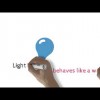Moovly is another neat way of making fun animations, presentations and posters. Record what you want to say then use the ready made clip arts to illustrate. You can upload your own pictures too. Use it to record explanations of theories or concepts in physics, to describe chemical processes or to tell some science history Full Article…
Little screen
Ages: 10 to 19 Overview Turn the stories created by students from the study of a literary book into an animated video using their mobile phones. The Little Screen (“Telinha do Cinema”) is a Brazilian project, which aims to encourage the integration of mobile technologies, in particular mobile phone, in the classroom. In this project, Full Article…
Animating the Past.
Who doesn’t love the ever-popular Wallace and Gromit? Stop motion animation isn’t limited to claymation; Tim Burton used stop-motion and puppets to create The Nightmare Before Christmas. Learners can use just about anything in their stop-motion animation, and thanks to digital cameras and computers, creating one is super easy! Necessary skills before the activity – How to Full Article…
Get animated
Another example using Dvolver, this time using an animation to set a task or ask a question, challenge your class to animate their responses.
Let’s animate
Age: 14 – 18 Goal: Pupils create gif-animations to visualize chemical processes. What you need: Enough computers Image editing tool (e.g. GIMP) Proceedings: 1. Introduction: Present a chemical phenomenon and give some basic information. GIMP-Tutorial (gif-animation) 2. Pupils’ task: Find out what’s behind that phenomenon. Break it down into its basic components. Visualize the process Full Article…
ET turns ugly
We love Dvolver as a foolproof way of introducing children to movie-making and animation. It’s free, easy to use and just right for 7-10 year olds. Nic has produced a full lesson plan on how to use it in your classroom.






 English
English Nederlands
Nederlands Deutsch
Deutsch Italiano
Italiano Español
Español Português
Português Română
Română Cymraeg
Cymraeg